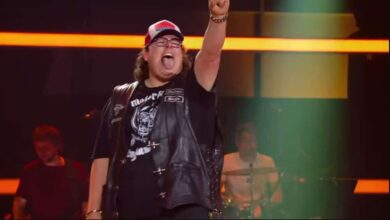Judas Priest’s “War Pigs” Reignites a Metal Legacy: A Timeless Classic Reborn for a New Generation
When Judas Priest unveiled their powerful rendition of “War Pigs” in 2025, it wasn’t just another cover—it was a seismic moment that connected the past and present of heavy metal. Originally made famous by Black Sabbath in 1970, “War Pigs” has always stood as a blistering anti-war anthem. By choosing to record and perform their own version over five decades later, Judas Priest not only paid tribute to their Birmingham peers but also brought new energy and relevance to a song that continues to speak across generations. Their release drew attention from the entire rock community, earning spots on trending playlists and igniting fresh debates about the enduring influence of British metal.
Judas Priest themselves are no strangers to musical innovation and reinvention. Emerging from the same gritty industrial landscape as Black Sabbath, the band formed in Birmingham, England in 1969. With Rob Halford’s soaring vocals, the twin-guitar assault of Glenn Tipton and K.K. Downing (and later Richie Faulkner), and a relentless rhythm section, Priest quickly distinguished themselves from their contemporaries. Their signature blend of melody and aggression, along with their leather-and-studs visual style, established them as global icons and major architects of heavy metal as a genre.
The idea to cover “War Pigs” was rooted in both admiration and shared history. The members of Judas Priest have long expressed their respect for Black Sabbath, often crediting them as the godfathers of heavy metal. In interviews, Rob Halford has spoken about attending early Sabbath gigs in Birmingham, soaking up the raw power that would later inform his own performances. When the opportunity arose to celebrate Sabbath’s farewell and the continuing legacy of classic metal, “War Pigs” was the obvious choice—a song whose message still resonates amid the turmoil of modern times.
Priest approached the recording of “War Pigs” with the same meticulous care that marked their greatest albums. Working alongside top producers, they retained the song’s iconic riffs and ominous tone while injecting their own brand of technical prowess and theatrical flair. Halford’s vocals were both reverent and fierce, channeling Ozzy Osbourne’s eerie delivery while stamping the song with his unmistakable power. The dual guitars of Tipton and Faulkner elevated the original’s sludgy heaviness into a sharper, more propulsive attack, while Ian Hill and Scott Travis delivered a rhythm section that thundered with authority.
Upon its release, Judas Priest’s “War Pigs” was met with enthusiasm from both fans and critics. The track quickly amassed millions of streams and became a highlight of the band’s live setlists. Critics praised the band’s ability to honor the original while reimagining it for a new era. Social media buzzed with reaction videos and glowing reviews, with many younger fans discovering “War Pigs” for the first time through Priest’s version, while longtime metalheads celebrated the union of two of the genre’s titans.
The cultural impact of “War Pigs” in Priest’s hands was immediate. The cover reignited discussions about the power of protest music and the role heavy metal plays in social commentary. Judas Priest’s interpretation, arriving during a period of renewed global conflict and uncertainty, reminded listeners of the song’s core message: that those in power must answer for the consequences of war. This resonance helped the song bridge generational divides and cement its place as a universal anthem.
For Judas Priest, “War Pigs” proved to be more than a tribute; it became a career milestone that introduced them to new audiences worldwide. The success of the cover led to a surge in ticket sales for their subsequent tour, which featured “War Pigs” as a dramatic show opener or encore. The band’s ability to channel classic material into contemporary energy reaffirmed their reputation as living legends, while also sparking collaborations with emerging artists who sought to tap into their enduring appeal.
Within the broader metal community, Judas Priest’s “War Pigs” set off a wave of renewed interest in classic protest songs. Other bands revisited their own catalogs for tracks with timely messages, while some crafted new compositions inspired by Priest’s bold reinterpretation. The cover also prompted think-pieces on the cyclical nature of music history and the importance of preserving the emotional core of great songs, even as styles evolve.
Not surprisingly, “War Pigs” has attracted numerous covers over the years, but few have carried as much weight as Judas Priest’s. While acts like Faith No More, Cake, and even Dream Theater have tackled the song, Priest’s version stands out for its faithful yet electrifying update. The band’s unique chemistry and decades of experience allowed them to reinterpret “War Pigs” without diluting its power, demonstrating both reverence for tradition and a commitment to pushing boundaries.
The timing of Priest’s “War Pigs” release coincided with several pivotal moments in their history. It arrived just as Black Sabbath marked their final hometown performance in Birmingham, and as Priest themselves prepared for a major world tour. The confluence of anniversaries, farewells, and rebirths gave the song an added emotional weight, turning live performances into communal celebrations of metal’s past, present, and future.
Decades after its original debut, “War Pigs” remains a staple of radio playlists and “best of” lists around the world. Priest’s version has already become a fixture in their catalog, with fans requesting it at shows and sharing bootleg recordings online. Its message of resistance, coupled with Priest’s dynamic interpretation, ensures its continued relevance in an ever-changing musical landscape.
The influence of Judas Priest’s “War Pigs” is also evident in the way it has inspired other artists to revisit and reinterpret foundational songs. By blending faithful musicianship with contemporary production techniques, Priest demonstrated that classic rock and metal can remain vital and innovative. Their approach—balancing nostalgia with a drive for reinvention—has already begun to shape the way newer acts think about covers and tributes.
In recognition of their contribution to the genre and their successful “War Pigs” revival, Judas Priest received accolades from both fans and peers. Tributes poured in from across the music world, and the cover was nominated for awards in several international polls. More importantly, it solidified the band’s status as not just performers, but as stewards of metal’s living history.
Ultimately, Judas Priest’s “War Pigs” endures because it captures the spirit of resistance and solidarity that has always defined heavy metal. Its powerful lyrics, thunderous sound, and impassioned delivery continue to resonate with listeners of all ages. The cover stands as a testament to the power of music to transcend time, challenge authority, and unite people in common cause.
For Judas Priest, “War Pigs” was more than a nod to their roots; it was a declaration of purpose and a celebration of everything heavy metal stands for. For listeners, it is a reminder that even the most iconic songs can find new life—and new relevance—when embraced by the right hands. In connecting past and present, Priest’s version ensures that “War Pigs” will march on for generations to come.





